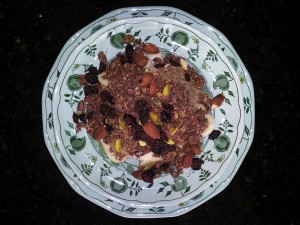On Acting My Age … Whatever it Is
Friday, January 16th, 2015By Bob Gaydos
I’m 73 years old. That’s a fact and unless I go to work for Fox News, I am not free to change it to suit my mood. Truth is, I don’t obsess about my age the way some do. Most of the time, I don’t think about it unless someone mentions it.
For example, last summer my partner and I were standing on line at a fix-your-own frozen yogurt establishment called Hoopla! The line of customers extended to the door and it was close to closing time. As I surveyed the offerings, my partner turned to me and said, “Did you notice we’re always the oldest ones in here?” I took a quick look around and told her that, no, I hadn’t and, furthermore, while I thought she certainly didn’t qualify, I was definitely the oldest person in the place.
And I wondered, “How come?” Don’t septuagenarians like frozen yogurt? Look at all the great flavors. And there are all the toppings — pretty much anything you can think of from fruit to nuts to Gummy Bears to complement the delicious frozen treat.
Maybe it’s the do-it-yourself bit, I thought. Or the standing in line. Maybe a lot of older folks don’t like standing in line. It could be the possibility of some messiness. Or maybe it’s just the whole idea of experiencing something new.
It’s my observation, which is open to challenge, that a lot of people of a certain age are not thrilled with trying something new. It’s as if they feel they have lived long enough and done enough. No need to learn anything else. Fixing your own dessert? Way too much trouble.
So, they have flip phones. They don’t text or Google. They barely e-mail. Kindle, schmindle; give ‘em a real book. And not a Facebook. That’s just too confusing … or something. And it’s not just frozen yogurt that they won’t eat: Kale, quinoa and coconut water will never cross their lips. Change is for the young.
I don’t get it. My feeling is, since I have just a limited time here, why not experience as much as I can for as long as I can? I know how easy it can be to slip into a rut of comfortability, even if things in life aren’t so great, even if I’m not in the best of shape. I’ve been there. It’s easy to say, hey, this is OK. I can handle it. I don’t have to worry about learning something new. School’s over. Time to relax. Ain’t retirement grand?
Actually, yes, retirement has been pretty grand. But it’s also not the end of the line.
I shaved my beard and mustache off a few months ago. In the space of a month, only six people noticed. I counted.
One of them was my son, Max, who had a full beard himself at the time. My other son, Zack, noticed that I had also gotten a haircut, which was a typical observation. Other comments ranged from, “You look really tan, Bob” to “Nice haircut,” to “You look good; are you working out?” to “Did you lose weight?”
To which I replied, varyingly, “Thanks.” “Yes.” And, “Hello, I shaved my beard off.”
The beard is now back, although trimmed fairly neatly, and the hair on top is cut short. Also neat. But more importantly for this whole getting older thing, were the other comments about working out and losing weight. They were correct. People noticed and, to be honest, it was nice to hear. The working out regularly, combined with eating a much more healthful diet, coincided with meeting my partner two-and-a-half years ago. More than ever, I don’t believe in coincidences. The result has been a significant weight loss for me and my feeling and looking better — healthier at any rate — at 73 than, dare I say, at 53. So, yeah, retirement is great.
Anyway, as I said, a few people did notice the beard was gone and their comments may be even more telling than the ones I didn’t get:
— “There’s Bob, looking all neat and reputable.”
— “You look so neat and clean.”
— “Now you’re not hiding behind anything.”
Or from anything either. The physical changes have been accompanied by subtle psychological changes, a greater willingness to try new things.
The point of this exercise in vanity, I suppose, is that numerical age doesn’t matter nearly as much as attitude does. That’s nothing new, I know. I just needed to acknowledge it publicly for myself. Just don’t tell me to act my age, because I don’t know what that means.
I am 73. I have a phone that is at least 10 times smarter than I am. I wrote this column on a laptop. I love WiFI. I have a Kindle and have actually read one book on it so far. (Confession: I still prefer the real thing.) I Google and text constantly. I eat yogurt and falafel and sushi and lots of fruits and vegetables. No red meat. I exercise with a growing degree of regularity. All my annual checkup numbers are in the positive range. My doctor says I’m the textbook example of what can happen when you actually follow your doctor’s advice. I kinda liked hearing that, too.
Now, if someone would just explain to me how 3-D printing works …






